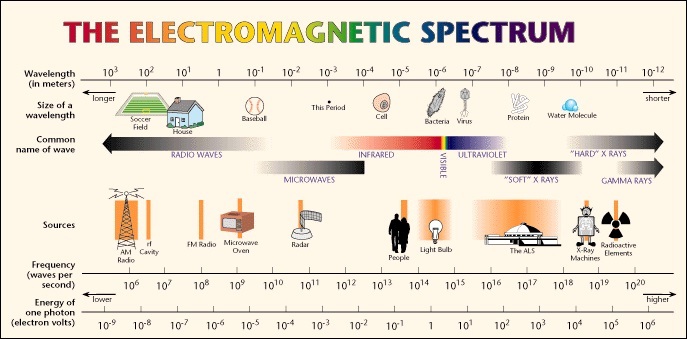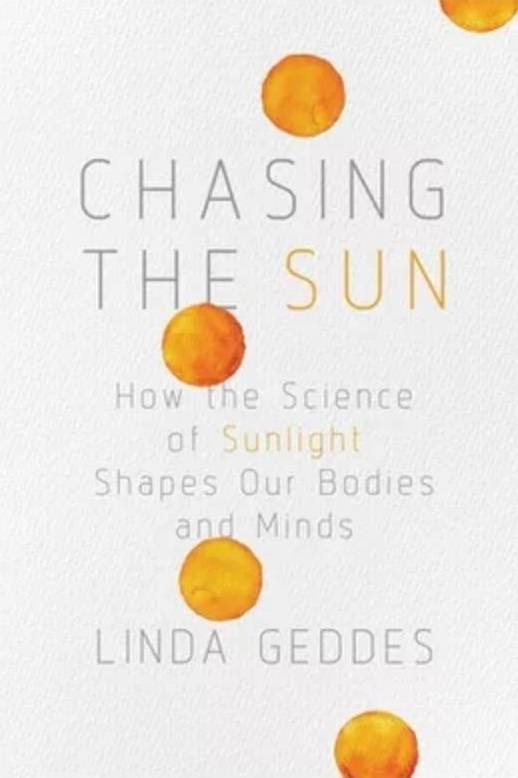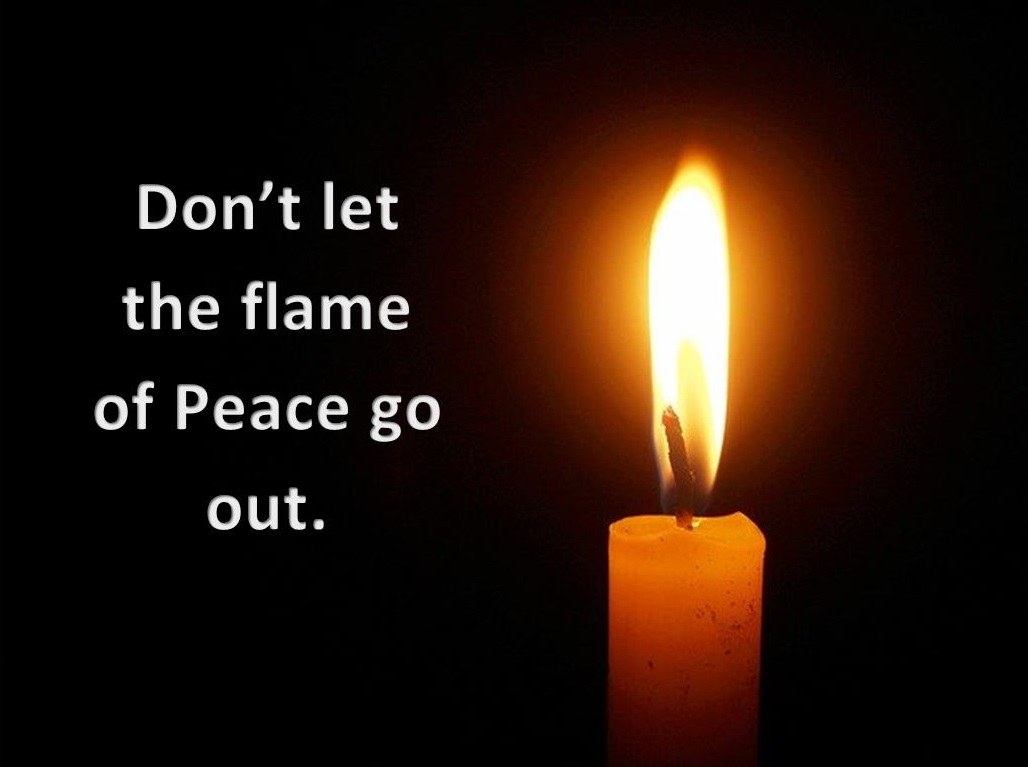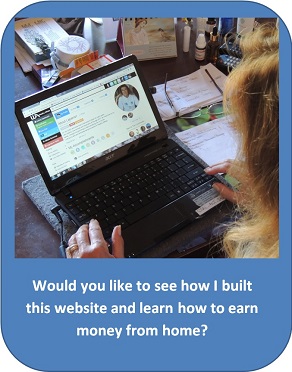The effect of the sun on the earth and her inhabitants
Our sun is the center of our personal universe. They named it after the ancient Roman god of the Sun, Sol. The ancients knew that without sunlight, vegetation would not grow, and without vegetation, animal life would not have the nourishment to exist.

Sun-set image Gerd Altmann
But just what is our bright shining star?
At the center of our solar system is a ball of energy made up, primarily of hydrogen and helium. It is going through a massive nuclear fusion reaction which creates all the energy it is releasing.
You may recall from your high school science classes that nuclear fusion is the process where two (or more) smaller atoms combine because of extreme pressure and heat, to form a single atom approximately equal to the total mass of the smaller atoms. In the case of our sun, the nuclear reaction is consuming hydrogen and making helium.
Now this reaction releases a massive amount of energy. It is hard to fathom the amount of energy released, but Learn Astronomy HQ tried to simplify the understanding. “In one second, the sun generates more energy than has been used in all of mankind’s history.”
Energy is measured (in the metric system) using the Joule. A typical 10-watt flashlight consumes about 600 Joules of energy in one minute. Our wonderful nuclear ball of light produces 380 quadrillion Joules every second.
Visualize if you will that there are an estimated 1 quadrillion stars in the observable universe. “So the amount of energy released by the Sun in 1 second is a number about 380 times larger than the number of stars in the entire observable universe.”
The Sun is roughly 1.4 million kilometers (870,000 miles) in diameter and has a mass approximately 330,000 times that of our fragile little blue dot, Earth. This perfect energy source is only 93 million miles away from our delicate, insignificant planet.
Now, not all the energy produced by Old Sol is directed toward our planet Gaia. According to Solar Powered in Toronto, about 1.74 x 1017 Joules of energy strike the earth every second.
The energy (power flux) produced by the Sun that reaches the top of the Earth’s atmosphere, is 1400 watts / m2. This (electromagnetic-EM) energy is provided in a broad range of energies, predominantly in the ultraviolet, visible and infrared regions of the EM Spectrum.
There is a small amount of high-energy radiation that is usually absorbed in the upper atmosphere.

The electromagnetic spectrum, (From Lawrence Berkeley National Laboratory https://www2.lbl.gov/MicroWorlds/ALSTool/EMSpec/EMSpec2.html).
Ultraviolet Radiation
Ultraviolet means “above violet.” The electromagnetic frequencies of ultraviolet radiation (UV) extend upward from violet, the highest-frequency of visible light. It was recognized as early as 1801 by Johann Ritter that the solar spectrum had an invisible component beyond the violet range.
The wavelengths of ultraviolet extend from 400 nm down to about 10 nm and are subdivided into three categories: UV-A (400 – 320 nm), UV-B (320-290 nm) and UV-C (290 – 220 nm).
According to Lumenlearning.com, Most UV-B and all UV-C is absorbed by ozone (O3) molecules in the upper atmosphere. Consequently, 99% of the solar UV radiation reaching the Earth’s surface is UV-A. This may be due to our Earth’s own magnetic energy fields creating the Van Allan belts and deflecting many of these high-energy particles away from our envelope of life.
The Van Allan belts are two regions around the earth that trap energetic electrons (outer belt) and protons (inner belt) as well as other particles at a much lesser rate.

By JHUAPL, NASA, recoloured by cmglee – http://www.nasa.gov/content/goddard/van-allen-probes-reveal-zebra-stripes-in-space, Public Domain, Link
Lower down, we have the 5 layers of our atmosphere. They are (from highest elevation to ground level);
1. Exosphere: the highest part of our atmosphere is where we actually lose molecules to space.
2. Thermosphere: The atmosphere in this region is very thin. A small change in the energy reaching this region will result in a large change in the temperature.
3. When the Sun is active, the thermosphere can heat up to 1,500 degrees C. The thermosphere is also home to the ionosphere. When the energy from the Sun hits the ionosphere, it can break molecules apart, sending electrons flying around and ionizing other molecules.
The ionosphere can help reduce the ultra-violet (UV) radiation through this ionizing process. It also helps absorb hard and soft x-rays.
4. Mesosphere: in this part of the atmosphere, the air is relatively mixed and is thicker than the higher levels. It is also the layer which is the first defense against meteor impacts.
5. Stratosphere: 90% of the Earth’s ozone is located in the stratosphere. Ozone is poisonous in the lower troposphere because it is a very reactive oxidizer, but in the stratosphere, it helps protect our planet by reacting to ultraviolet rays (UV) that pass through the higher portions of the atmosphere. Ozone is a molecule of 3 oxygen atoms (O3), unlike the oxygen we breathe, which is 2 oxygen atoms (O2).
When solar radiation (UV) hits and energizes an ozone molecule, it breaks the molecule O3 into a molecule of O2 and an ion of O–. This single O– atom can react with another molecule of O– or recombine with another O2 molecule creating another O3.
It is important to keep in mind that ozone is constantly being created and destroyed and that these reactions are natural processes, which have been taking place for millions of years. Overall, these reactions are in balance with each other, and we have a stable ozone layer.
6. Troposphere: this is where we live. The troposphere extends from ground level to about 20,000 feet. This is where weather occurs.
As mentioned above, our ozone layer helps reduce the amount of UV radiation that reaches the surface of our little blue dot. In 1987, the Montreal Protocol was signed. They made this international agreement to phase out the production of many ozone-depleting chemicals.
These chemicals, predominated by Chlorofluorocarbons (CFCs), migrate to the Stratosphere. Just as the example given of the O3 reactions above, UV radiation energizes the CFC molecule, breaking off a chlorine ion (Cl–). This Cl– ion reacts to a nearby O3 molecule, creating a chlorine-oxygen (Cl-O) molecule and an O2 molecule.
The newly created molecule of Cl-O reacts with another O3 molecule creating an O2 molecule and a single Cl– ion (which is free to attack another ozone molecule.) A single chlorine atom would continuously destroy ozone for up to two years before falling back into the troposphere.
Bromine and fluorine are equally reactive, so we can understand why our ozone layer is depleted and we are experiencing an increase in UV radiation.

Crowded beach image Pexels
The Sun and a rise in temperature
Having lived in the south of Spain since 1976, I have seen the change in the climate. Recently an article came out in the local newspaper SUR, stating that the average temperature at the Malaga airport has gone up by 1.3 degrees when compared to 30 years ago.
Experts say this directly results from climate change and that more green space is needed to mitigate the effects.
For the normal person, this might not be much, but it has alarmed scientists who predict that by the year 2050 the rise will be 2.4 degrees. That means that in only one century from 1943, with a temperature of 18.1 degrees, it will be 20.5 degrees in 2050.
I am not certain that most people understand the entirety of the problem. They will say, yes it is somehow hotter but they do not realize that we rely on the cooling nights. What generally happens is that temperatures during the night are increasing more rapidly than during the daytime. It unevenly distributes the average temperature throughout the day.
Scientists are already seeing the telltale consequences of global warming. Sea levels are rising and crops are ripening at different times in the year than normally expected.
They have analyzed some big cities in Spain. Barcelona, which is roughly 1000 km north of Malaga, has experienced an increase of 1.9 degrees. Then there is Avila, in the center of Spain, which can boast an increase of 1.8 degrees.
The best solution scientists come up with, besides reducing greenhouse gasses, is to plant more trees, lots of them.
The danger of too much sun
The Costa del Sol is a very sought after holiday destination. Even if Andalucia has a proud cultural heritage with many lovely and interesting towns to visit, and beautiful Natural Parks for walking, a big part of the 12.5 million tourists (2018) that come to visit, have, as their main aim, the lovely beaches.
When you take into consideration that the official population of the Costa del Sol is 1 million people, you can understand that at certain times of the year it can get rather crowded. Those are the months where I prefer to stay home and wait for quieter times.
These people arrive, pale-skinned, to leave after 14 days, often unrecognizable, so dark they have become. To stay for hours on end on the beach, day after day, absorbing all the sun they can get, is extremely dangerous for your health. One should not forget that the sun reflects off the water as well, and while swimming in the sea your sun protection has gone.
The effects of the sun are not the same as 50 years ago. This is because of a thinning out of the ozone layer. When in old times you might have needed protection of 20 to 30, nowadays you might need 50 or more.
What skin type are you?
1. Very Pale or White. These people are albinos and should really never sunbathe.
2. Pale Skin. This is the Celtic or Anglo-Saxon type. They have to be very careful.
3. and 4. Medium and Brown. These are the Mediterranean people. There are 2 types. One has a medium skin while the other is much darker.
5. Dark Brown. Gypsy origin, Indians, South American.
6. Very Dark or Black. These people should protect themselves from ultra-violet A radiation.
As a general rule, one should not be in the sun from midday to 4 pm. You need sunglasses to protect your eyes. Caps and hats are recommended, especially for small children and older people. After swimming or perspiring a lot and in general, every 2 hours, an additional layer of sun protection should be applied.
A special book
Here you will find some unusual information on the sun.
No bad chemicals on my skin
One should not forget that the skin is our biggest organ. When your skin is bad, it is a sign that something is not functioning well inside your system. One should try to avoid artificial foods loaded with pesticides, toxins, etc, so then why would you use a product which is not natural, but loaded with chemicals?
Here EWG comes to our aid. They have a list of 303 products which you can use. I am sure you will find some of them meeting your needs. Have a look at EWG’s list of Best Beach and Sport Sunscreens.
Personally, I do not use sunscreen, but then I do not lie for hours on end in the sun. As the climate is normally mild also in the winter, whenever there is the time I try to catch my 15 to 20 minutes of sunshine on the patio. I am not really brown, I would call it having a healthy-looking color.
More sun in the south means more skin cancer
In the Malaga province, there are 20 cases of skin cancer per 100,000 inhabitants which is double the national average.
People who sunbathe sensibly can avoid 90% of skin cancers.
In the year 2017, there were 5,500 cases of skin tumors treated in the province of Malaga.

Kid on the beach image StockSnap
The difference between a benign mole and melanoma
A. A stands for asymmetry; Moles are round and symmetrical / melanomas are initially asymmetrical.
B. Is for Borders; boarders of moles are even / Borders of melanomas are initially uneven
C. C for color; moles are light or dark brown but homogeneous / melanomas are uneven in color with two or more tones, blackish, reddish.
D. D for diameter; moles are smaller than 6mm / melanomas are bigger than 6mm.
E. Is for evolution.
Solar rays can cause photosensitivity and allergic or toxic reactions by itself, or in combination with certain medication people might be taking. Dermatologists tell us that the skin has a memory. The more sun you got when being small or later on when becoming an adult, the greater the chance you might suffer skin cancer.
Whenever you have a mole which behaves strangely, go and see the doctor. It is not a bad idea to make it your habit to visit the dermatologist yearly for a general checkup.
Conclusion
We need the sun to stay healthy. Solar rays are essential to synthesize vitamin D. With no sunshine, people would suffer from rickets and not be able to live. The fact that the sun favors the secretion of endorphins which makes people feel happy and full of energy is another plus point to consider.
Modern life makes us sit inside too much, be it in a car, office or at home. Go out there and get your daily ration of sunshine. It is good for your health and makes you happy.
I have made a special page for you. It holds a collection of things you might find interesting. Before you leave, visit Recommendations.
Source: Newspaper SUR, 19th to 25th July 2019, article Matias Stuber on Climate
Angel Escalera, article on Skin Cancer, Newspaper SUR, 14th to 20th of June 2019
Photo Source: Pixabay
You might be interested to read the following post.












Comments
SeunJeremiah
Thanks for this informative and educative post, it comes with a lot of knowledgeable information about the sun, I got to understand without the sun the planet would be a cold, lifeless chunk of rock. People can feel the warming effects of the sun, but many people do not know of the other ways the sun interacts with Earth.
Taetske
Good Morning Seun,
Thank you for your visit and leaving a comment. I hope you downloaded your free PDF? Tulip widget.
As with everything in life, too much or too little neither is good. As the weather conditions have changed over the years and the ozone layer is protecting less one has to be careful with sun exposure. Just be informed and take care.
Regards, Taetske
Nazmun Nahar
Hi,
Thanks, for this informative article about the effect of the sun on the earth and her inhabitants. You explain everything here very well like how the sun lights works, the importance of sunlight and what problem we could face if we get less sunlight.
I agree with you, we could see the research that most of the skin cancer could be caused by getting too much sunlight. And it makes me worried when I think about it.
As we living in the UK and everybody knows how British weather is. Most of the time we couldn’t see sunlight. But we should try whenever we get a chance, take sunlight and care for our skin.
Taetske
Good Morning Nazmun,
Thank you for visiting my website and leaving a comment.
Nice to hear you found my article informative. When I was 16, that is a long time ago, I lived for 1 year in England. It is true the weather there is not so nice when you compare it to the south of Spain.
These last years the summers have been quite hot, more than 30 years ago. Spring and autumn are hardly noticeable and the winter has become very mild with 20C at midday. The weather is definitely changing so we have to be more careful with our skin.
I hope you have downloaded your free PDF? Tulip widget.
Regards, Taetske
Michal Bahno
I did enjoy reading about the sun. Very interesting stuff.
I personally do not use any of the sun protection even when I go for a vacation to let’s say Italy. Shall I use it? I don’t know. In my opinion I don’t have to.
Well, there might be some examples where I might need it. Me being in the middle of EU don’t get much sun in winter days. If I decided to visit SE Asia in March, then it would be a good idea to use the sun protection.
On the other hand I remember when I used to work in Hamburg. It used to happen that I did not see the sun for 2 weeks. I was very close to depression.
It is incredibly interesting, how much of influence our closest star has on our mood.
Great Article
Taetske
Good Morning Michal,
When you do not see the sun for a longer period you get depressive, that is true. That is also why people who live in Nordic countries coming to the south of Europe often overdo it with sunbathing. They try and get as much sun as possible into a 2 weeks holiday which is not a good idea. As I live here I try to get a little the whole year-round.
You ask if when going to Italy you need sun protection. It all depends on your skin type and how long you plan to be in the sun. I would advise you to be careful as our ozone layer does not provide the same protection as like 100 years ago.
Regards, Taetske
Jordan Smith
My college teacher use to say that “Our bodies were built to make good use of the sun” but it’s unfortunate that climate change turns out to be changing statements like that. To be honest, I really never realized that sun can actually be this harmful to our health! Thanks for opening up my eyes to so many things about the sun!
I’m sharing this right away.
Regards!
Taetske
Good Morning Jordan,
Thank you for visiting my site and leaving a comment. I hope you downloaded your free PDF? Tulip widget.
As with everything in life too much of something can be harmful. This also can be applied to the. sun. We need it for our earth and our health but in the right dosage.
Regards, Taetske
Leahrae
Living in the sunshine state of Florida, I have to start looking out for things like skin cancer. I moved here four years ago and really do love the beach and spending time in the sun. I do wear sunscreen, so that should make the difference for me right? I do see a dermatologist each year just to make sure I am good.
Taetske
Good Morning Leahrae,
Thank you for your visit and for your comment. I hope you downloaded your free PDF? Tulip widget.
We need sunshine for the vitamin D3 of which many people are deficient. Especially in 2020 people stayed home because of COVID-19 so some extra sun would be beneficial.
Too much sun is bad for your skin. It is of utmost importance that when you use a sunscreen, it does not harm your skin with chemicals. I hope you clicked on the link of EWG. Best beach and sport sunscreens. I am sure you will find one that suits your need. Good you have a yearly visit to the dermatologist. I do the same.
Regards, Taetske